
Volkswagen Passat Estate (2015-2024) long-term test

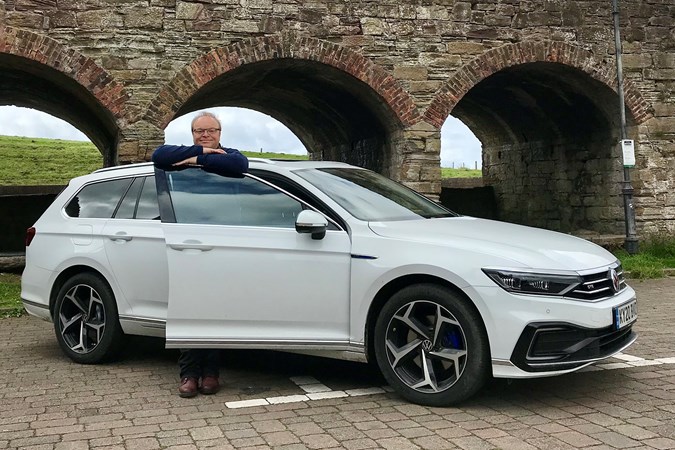
What is the Passat Estate like to live with in plug-in hybrid form? We’re testing one over an extended period to find out whether a combination of EV and petrol running compares with a more traditonal diesel.
Jump to:
- Practicality
- Long-distance driving
- Comparing it with a Skoda Superb
- 6,000 miles on – fuel economy
- 7,500 miles on – taking stock
- Verdict
Update 1: Welcome
Introducing the Volkswagen Passat GTE Advance
Unless you’ve been living on the moon for the past few months, 2020 has been an unprecedented year in so many ways. Ignoring the obvious rhinoceros in the room and keeping this piece to cars, the biggest change in the UK automotive scene has been the noteworthy rise in plug-in hybrid (PHEV) and electric car (EV) sales and the consequent massive decline in diesel-powered cars finding new homes.
And if we’re talking PHEVs, Volkswagen has form in this area – and is well positioned to offer plug-in cars that people actually want to buy. The previous-generation Golf GTE, which we ran on an extended basis, proved so popular the company couldn’t meet demand. Volkswagen says that this problem has been solved – good news for anyone looking for a PHEV, but we’ll see once the GTE version of the Golf 8 goes on sale in 2021.
The Passat GTE is available here and now, and proving very popular. It’s a PHEV version of one of the more popular company cars (83% are sold to fleets right now) – and given the tax advantages that PHEVs currently attract, this explains why you’re seeing plenty on the roads. Some 20% of all Passats sold are GTEs and expect that percentage to increase. That’s why we’re running a Passat GTE – and the reason we’ve plumped for the estate version is that it outsells the saloon 2:1.
Tell us about the Passat
The Passat was facelifted in 2019, which ushered in subtle styling revisions and some significant technological improvements. It’s an evolutionary process that’s been ongoing since the Audi 80-based Passat B1 was launched in 1973. The GTE’s updates are significant with better connectivity and an electric-only range increased by almost 40% to 33-36 miles (WLTP).
My Passat is a GTE Advance, which comes in at £41,450 on the road (at the time of writing in September 2020). Being a PHEV, it’s rated with zero ‘first year rate’ Vehicle Excise Duty (VED), and has a BIK tax rate of 10% (for 20% tax band). It’s powered by a 1.4-litre TSI petrol with lithium-ion battery and electric motor.
Interestingly, the claimed fuel consumption is 194.9mpg, which is fairly typical of a PHEV, as they are tested when fully charged. My intention is to keep the Passat fully-charged as often as possible, and run it on battery for commuting to the office and for local trips. Long distance journeys will be run in hybrid mode, from fully-charged at the start. Let’s see how long it can manage a battery’s worth of charge.
Total power is 218hp with a 138mph maximum speed and a 0-62mph time of 7.6 seconds. So, it’s rapid and promises to be economical. We shall see.
What do you get with the Passat GTE?
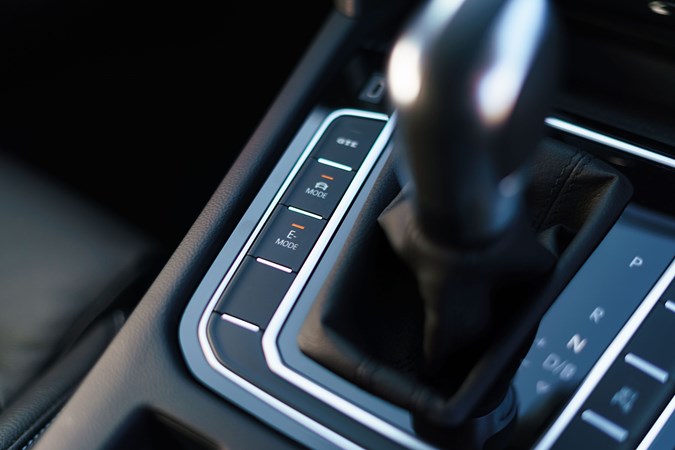
My Passat, like all GTEs has a six-speed DSG automatic transmission, and comes with plenty of standard equipment. You can read all about the safety kit elsewhere in this review, but top line is that you get a five-star Euro NCAP performer with the latest systems.
Now pay attention – this won’t take too long. Safety kit includes BAS (Brake Assist System), ESC (Electronic Stability Control Programme) includes EDL (Electronic Differential Lock) and ASR (Traction Control). Then there’s the trailer stabilisation function for those who like caravanning, PreCrash preventative occupant protection, Proactive occupant protection and a Driver Alert system. The last one works with the adaptive cruise control system to let you know when you’re drifting in the lane, or have been driving for too long, useful for long-distance junkies like me.
Top line equipment includes triple-zone air conditioning with automatic air recirculation, keyless entry, including start/stop button, an electric tailgate, heated front seats, Active Info Display (below) with 10.25-inch high resolution TFT dash display screen with customisable menus and information, and ‘e-sound’ – exterior sound generator to warn pedestrians you’re mooching around in electric mode.
I’ll be talking about these and more in forthcoming updates.
What other really clever stuff does it come with?
This is one fully-equipped car. But despite a rammed equipment list, we did pick a few tasty extras from the options list. There’s the blandly-named area view system for the parking assist system, which uses front, rear and side cameras to provide 360 degree exterior view of vehicle displayed. It works a treat, but worth serious consideration given it costs £835.
The Dynamic Chassis Control (DCC) adds a further £920, but you do get Sport, Comfort, Individual and Normal drive modes. The XDS electronic differential lock (£205) – an electronic system to improve traction and handling – seems like money well spent, assuming we have a cold and slippery northern winter this year.
And finally… we specified it with Dynamic Centre Caps, which are self-levelling Volkswagen logos, and come in at a cool £158.50 including fitting. What do they do? Look at any photo of this car, and you’ll see that its ‘VW’ logos are always the right way up (a photographer’s dream) and spin silently as you drive, just like a Rolls-Royce Phantom.
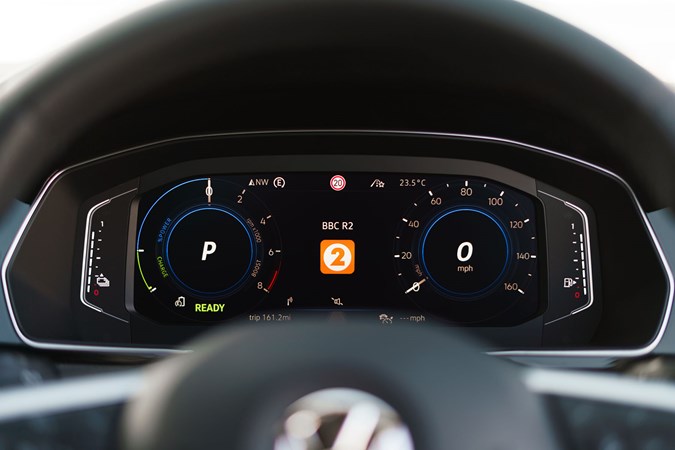
What are we trying to get from this long review?
Anyway, less of that. There are several reasons for running this Passat. But here are the main ones to consider what we’d like to prove over six months of running?
Can it replace your diesel?
Chances are that a Passat GTE is replacing a TDI and as such, you’ll love the easy mid-range pulling power, great fuel economy and long fuel range between top-ups. My own experience is that you’ll get more than 600 miles from a tank in a Passat TDI, and once you’re on the motorway, it’ll sit all day at the legal limit without dropping a gear or raising a sweat. And that’s why so many people love diesels.
So, would a plug-in hybrid be able to deliver the same long-legged, easy diving experience. With 218hp on tap, it’s going to be quick, but will the additional torque of an electric motor make it effortless, too? Volkswagen’s DSG transmission is good at being in the right gear at the right time, but will it be busier at speed? Will it be noisier? We shall see in the next six months. Equally, how far will it go on a tank of petrol? How often will it need recharging? Will it be less convenient than the diesel?
How economical is it… really?
There are some fantastic claims made about the fuel consumption of PHEVs, not least the official ones that suggest you’ll get 100mpg+ in daily ‘combined’ driving. Experience suggests that is entirely possible, but it really comes down to what your usage is. If you do 500 miles a day all-year round on the motorway, it’s unlikely you’ll get anywhere near that. But if you’re commuting to the railway station 10 miles away, the chances are you’ll beat it easily. I’m hoping that the way I use the Passat reflects many users – a combination of local trips of less than 40 miles in a day, combined with regular, weekly 250-mile journeys.
In normal times, I should knock up 20,000 miles a year in this car, but with more working from home, this might end up being closer to 12,000. Even so, the combination of short and long runs should deliver a great real-world test and see if PHEVs really are the logical next step for anyone who needs a car that can fit into anyone’s life without compromise.
Update 2: Comfort and practicality
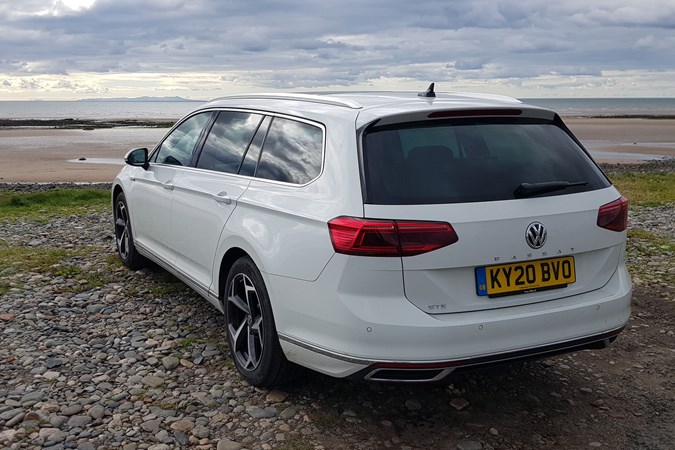
How does the Passat Estate size-up as a family car?
So, here we are already. Probably the most important aspect of Volkswagen Passat Estate owership, once you factored out the tax-saving aspects of the GTE’s plug-in hybrid system. As these cars are generally bought for their load-lugging ability, and it’s why I’m running this car. We’ll cover the car’s comfort, though, before getting around to this, as it’s definitely praiseworthy.
As you’ll read in the review’s Interior section, this is one supremely comfortable car – the ‘ergo Comfort’ front seats might feel a touch hard – like a church pew – when you first jump in, but the support they offer on long trips is excellent. I suspect, it’s licked my back into shape a little, because for the first 1,000 miles or so, I couldn’t travel more than about 100 miles without getting twinges in my lumbar region. This doesn’t happen three months down the line.
So, don’t worry if you’re not comfortable on first acquaintance – this will pass. The full electric controls and seat heaters are also first rate, and all this GTE is missing is a massage function. The driving position itself is what I’d call ‘commanding’ and although it’s not like you’re on tip-toes like an SUV, you really do get a good view out. It’s little details like that which really work for long-distance drivers. We’ll come back to this more fully in the next update.
What about practicality?
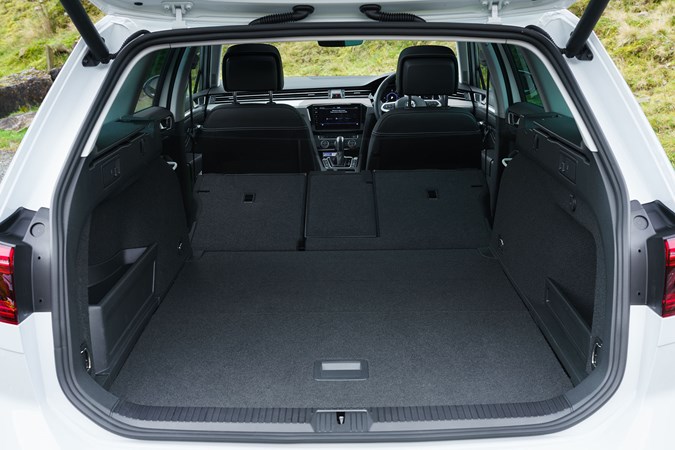
Sorry to start this section with a boring picture of a luggage bay, but isn’t this really why you’re buying an estate version anyway? Seats up, the Passat swallows 650 litres, which in real terms means that in most situations, you’ll not need to drop the rear seats when shopping or carrying typical amounts of lugagge.
In a recent road trip, it swallowed two weeks’ worth of luggage without breaking a sweat – but it’s not just the sheer size of the boot that impresses, but the practical shape, which has a nice large opening, and a near-square loadbay. Impressive.
I’ve yet to really push the Passat’s load area, but intend to soon, especially if my planned career change into antiques dealing comes to pass (joking). For the record, it will carry 1,780 litres with the rear seats down – I’ll report back what that’s like in the real world.
It’s also worth noting that my son, who is 6ft3in, can comfortably sit behind me in the driving seat (I have it pushed back a long way) without any complaints about head or legroom, even on a longer trip. This is good news for all those with a larger family, and are contemplating what to buy next.
Other than the Skoda Superb Estate, I can’t think of a more commodious car for this sort of money. And that includes SUVs. Stay tuned to see how it handled a recent 1,600 road trip that included the now-legendary North Coast 500 route in Scotland.
Update 3: What’s it like on a long journey?
Taking the Passat for a spin in the Highlands and Islands
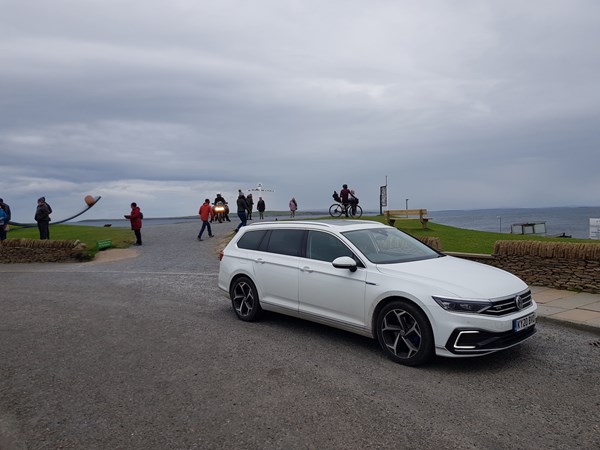
Like lots of people in 2020, my travel plans have been shot to pieces by the Coronavirus (COVID-19) pandemic. Planned holidays went up the spout as the world hunkered down to get through ‘challenging’ times by staying safe, staying distant – and staying home.
I won’t moan – it could be a lot worse. But as the year wore on, the need to get away became intolerable, so on the back of yet another overseas break being cancelled, I decided to grasp the bull by the horns and get myself – and my lovely Passat GTE – to the north of Scotland to finally spend some time getting really acquainted with the North Coast 500.
For those who aren’t aware of this route – it’s a loop that takes in the West Highlands, starting and ending in Inverness and taking in some of the finest scenery you’ll see this side of the Alps. I’m far from the first Parkers staffer to take their long termer here – Keith Jones did it back in 2017 in his Ford S-Max, but as it’s officially a holiday, I have no intention whatsoever of scorching round at his pace.
So, what about the journey?
My version of the North Coast 500 would start at the office before heading to my gaff in West Cumbria. Then it’d see me head up to Inverness, before taking overnight stopovers near Wick, Durness, Ullapool and Poolewe. Then it’s a case of deviating from the route to kick back on the Isle of Skye for three nights, and down to the Trossachs before heading back to Cumbria and on to the office in Peterborough.
Put it this way, if I don’t know the Passat by the time I returned from that little lot, I never would. Google maps says that the route is 1,604 miles, much of which I am super-familiar with, leaving me time to really get under the skin of a car I have been struggling to fully bond with to this point. Before the off, I’m impressed with how easily it swallowed luggage for two (my partner likes to pack well), and how the luggage cover never comes close to not covering up fully.
Days one and two are mainly motorway and A-road, and they see my patience tested thanks to its slow infotainment system (boot-up is especially painful), with some frankly baffling screen display options (please, someone tell me what the point of the screen below is), and a complele inability to run Apple CarPlay reliably (by cable or wirelessly). In the end, I give up on CarPlay, run the excellent in-built sat-nav system and play music from a USB stick.
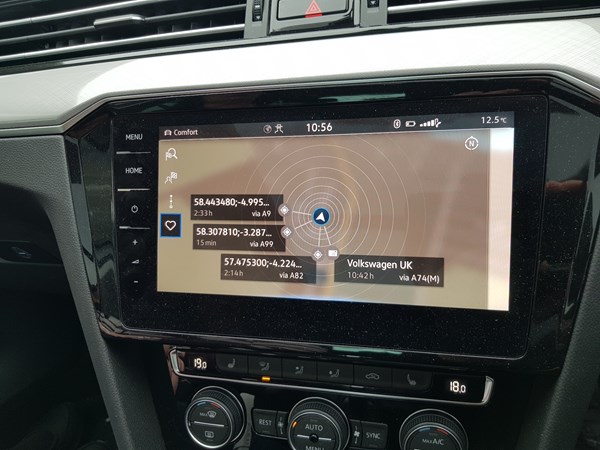
What have we been learning?
The good news is that the Passat is a refined long-distance cruiser. On the motorway, it’s hushed with low levels of road and wind noise, while the supportive front seats mean I have no problems at all racking up long distances. From West Cumbria to Inverness, the boringly speed-controlled A9 is ticked off with ease, as is the next leg up to Wick and John O’Groats (pictured above).
I tried to recharge the car where I can, but don’t get hung up over it. With a full battery, fuel economy will hover around 48mpg for the first couple of hundred miles as the car does a grand job of managing what charge it has, but once that’s depleted, it drops to a less impressive 38mpg, None of these will trouble a diesel Passat, but then a diesel Passat won’t whisper silently through villages should you choose to. Nor will it commute on battery alone.
The ride control and body control are good (better than the Skoda Superb Estate), and while handling and steering won’t win any prizes for engagement, you can’t fault the car in terms of poise and balance. What you don’t get is feel. But then, do you really crave this from a car so clearly focused on motorways?
Following the western coastline
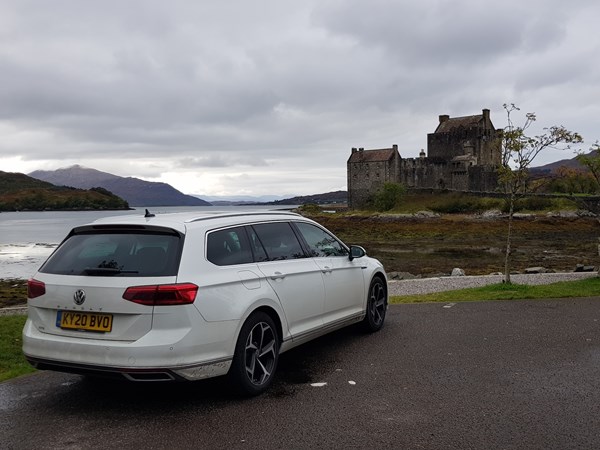
Heading for the unfeasably beautiful north western coast of the Highlands and the roads get narrower and more twisty – the Passat keeps it together beautifully. It grips and steers with accuracy, and as long as it’s in the sportier GTE drive mode, it’s also responsive and keep to make best use of its combined petrol and electric power. Is it fun? No. But it’s good. Better than expected.
Along the way I see one or two supercars making the same journey as me – weirdly, many seem to be going clockwise, which means you get the best stuff early on – and I don’t feel even a pang of envy. Yes, they’ll be loving their drive, but they’ll be sat low in wide cars and minimal ground clearance. No thanks, not for some of these narrow and testing roads. As it is, the Passat and I are getting along just fine.
It’s good to see that the majority of the more upscale hotels on the route (there aren’t that many, truth be told) boast EV chargers, including Tesla Destination chargers, some of which are generally configured to allow other manufacturers’ cars to use them. That’s good because, the GTE is far more pleasant to drive with a bellyful of volts to top up its petrol engine. I use them gratefully.
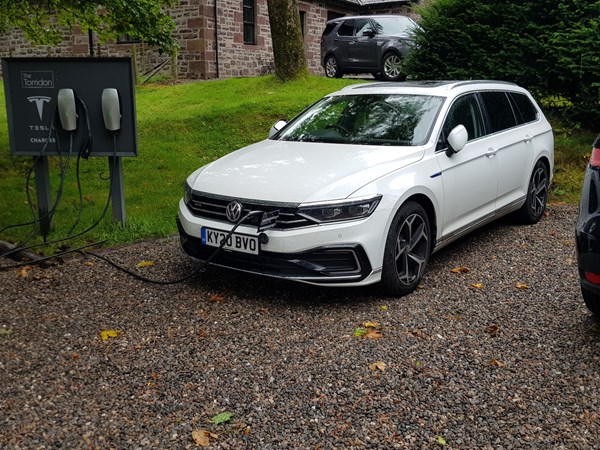
Back to reality
Three lovely days are spent on the Isle of Skye, followed by a wonderful drive through the Great Glen and down to the Trossachs. What I’m finding on this trip is that the fuel consumption is actually disappointing (some fill-ups get me no more than 35mpg), whereas you’d easily go twice as far for your money in a diesel. So, if distances are your thing, do think carefully about whether this PHEV is for you, especially as it’ll struggle to get 400 miles per tank.
Despite that, it handled this trip to far north of Scotland magnificently. It’s comfortable, refined, and never wore me out, even on the longest, most challenging days. The lack of noise is a big factor in this – as are the orthopaedically-designed seats. But it was far from perfect.
Disappointing fuel consumption aside (admittedly on a journey that’s far from ideal for a PHEV), the infotainment system drove me to distraction. There were other small niggles, too, such as the intrusive lane-keeping assist, which lacks subtlety of response, and the surprising lack of storage nooks and crannies in the passenger compartment (something its Skoda Superb sister car does so well).
But overall, the Passat’s earning its keep and on the trip, it’s certainly earned my respect and admiration, if not my love…
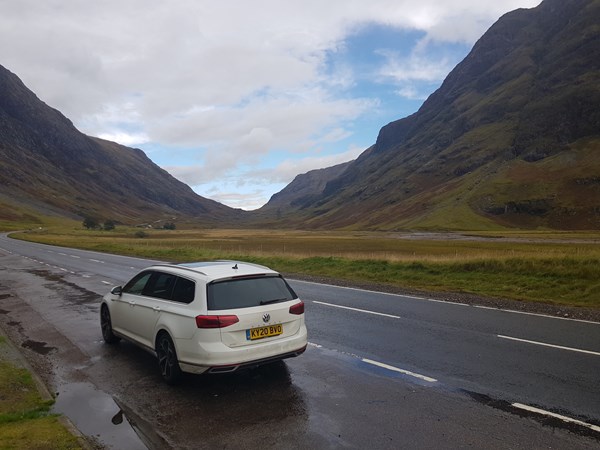
Update 4: How does it compare with a Skoda Superb?
Back-to-back with its closest in-house rival…
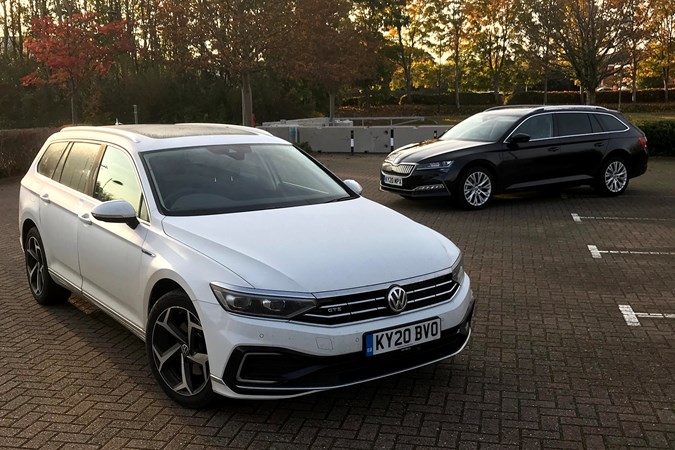
The Volkswagen Passat doesn’t have the family estate car market to itself, even if sometimes it might seem that way when you see the sheer number of them on the roads. But as I have previously run a Skoda Superb Estate, which proved very effective over 22,000 miles and a year’s driving, it seems worth putting one alongside the Passat and seeing which one’s the better bet.
The comparison is completely relevant because in early 2020, a new plug-in hybrid Superb, called the iV, went on sale – and in terms of tech and equipment, it’s all-but identical. Both cars share the same 1.4-litre petrol engine/electric hybrid drivetrain, and on paper, there’s nothing to choose between them.
Get the cars alongside each other and the similarities do start to fade. The Skoda’s styling is clever and disguises its bulk extememly well, but it also looks smart, interesting and cohesive. The Passat’s a more anonymous effort, but also is also classless in typical Volkswagen style. But despite being slightly smaller than the Skoda, it looks bulkier, more imposing – more expensive. Which, again, is what you’d expect given the brands’ respective positions within the Volkswagen Group empire.
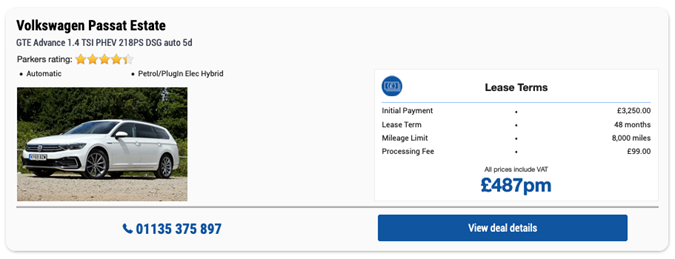
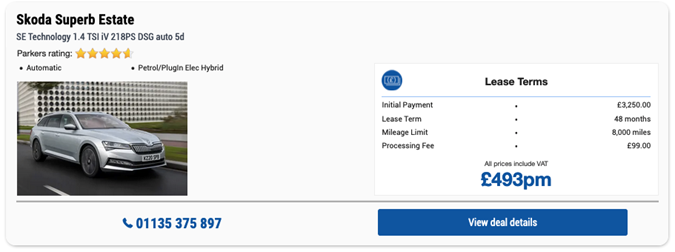
Interestingly, as you can see from above lease deals, the Passat is cheaper on a monthly despite a higher cash price (£41,450 versus £34,870 in basic form as of Novembr 2020). That puts an interesting spin on what you get for your money, considering 91% of retail customers now finance their car monthly instead of paying cash. Food for thought.
So, we’re actually comparing like with like, and as such the old argument that you pay more for a Volkswagen really don’t hold up anymore. That’s a good thing, as inside, they’re evenly matched with essentually the same dashboard and interior. The Skoda’s seats are slightly softer (which I prefer), there’s slightly more rear legroom, the infotainment set-up is newer (and slower!) in the Passat, and the Superb’s Adaptive Cruise Control set-up is controlled via a stalk rather than buttons on the steering wheel (again, I prefer that). As I say, they’re evenly matched.
On the road, there are more differences – and overall, the Passat is the better of the two. It’s suspension set-up is firmer, but the body control is better, handling motorways and lumpy B-roads in a slightly more assured manner. There’s definitely less road noise in the Volkswagen, too, which is impressively refined on longer journeys. The Skoda’s softer ride, I think, makes it a slightly better bet if you’re mainly in town and dealing with potholes and broken surfaces – but on the whole, the Passat is the better car here, with the caveat that the Skoda is the preferred choice if you like a softer ride.
So, which would I choose?
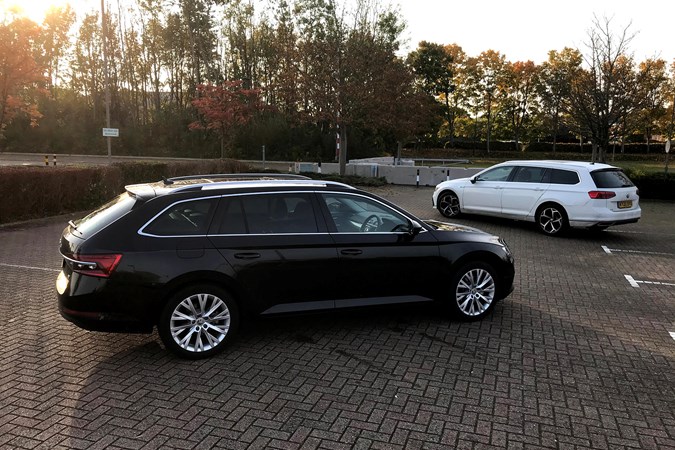
I spent a week in the Skoda and used it on the same Midlands-Cumbria-Midlands journey I regularly take the Passat on, and in terms of heart versus head decisions, it’s actually quite simple. From the heart, the Superb would be the car for me, down to its (in my opinion, obviously) nicer styling, slightly more forgiving ride, and an interior that works better for me.
Interestingly, the Skoda delivered slightly better fuel consumption than the Passat for this run, and I am slightly at a loss to understand why this would be. From full charged in the Midlands to empty in West Cumbria, the Superb delivered 51mpg compared with 49mpg for the Passat. Considering I tend to play with the battery charging settings along the way, switching between drive modes, it could be down to how I managed things – but that’s a not insignificant difference.
However, I am am talking heart versus head here, and rationality soon swings decisively in favour of the Passat. So, from the head, the Volkswagen’s financial argument really comes back into play. I suspect that as well as lower leasing costs (for a more expensive product) will translate into better long-term residual values in years to come (important for those who are buying and keeping the car).
Also, after taking the same run again in the Passat the week after I did the Skoda, it was clear that I was slightly more relaxed at the end of the journey, which suggests that the lower overall noise levels and AGR seats have a not-insignificant cumulative effect over a longer period of time. So, there you go – heart says Skoda, head says Volkswagen.
Wasn’t it always thus?
Update 5: 6,000 miles and counting
Taking stock after six months
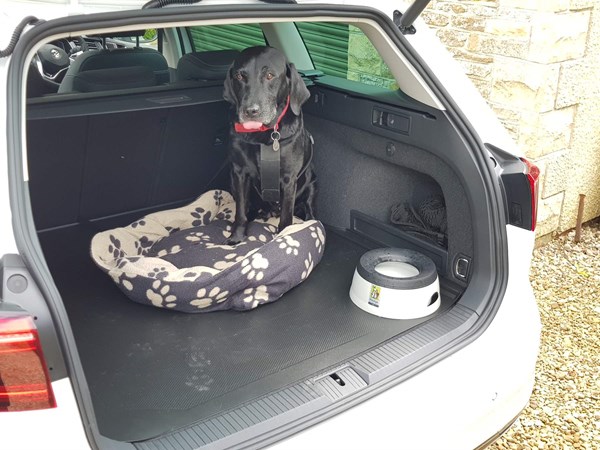
It’s funny your impressions and opinions of a car can change significantly over time – sometimes for the better, sometimes for the worse. In the case of the Volkswagen Passat GTE Advantage, it’s definitely a case of growing respect as the miles pile on. The odometer might be going up more slowly than normally, thanks to the social restrictions and the pair of lockdowns we’ve been through so far in 2020, but we’re getting a proper run in it.
I’ve already discussed at great lengths its excellent long-distance comfort and refinement, so won’t dwell too much on this, as is the case of its impressive practicality. As a carrier for the family Labrador (above), it’s absolutely peerless, offering a large and flat loadbay, seats up – while the rear seat room is little short of luxurious, only being pipped by the excellent Skoda Superb Estate.
But some of the tech included in this car as standard is truly marvellous, and what really sets this apart from its rivals – the Skoda Superb we compared it against, for instance, isn’t available with quite the same level of tech, whereas more premium rivals that do offer the kit the Passat does are considerably more expensive.
Active LED headlights clean up at night
Two pieces of tech have really impressed me about this car, especially as we’re now in the middle of winter and taking on regular long journeys – for essential travel, of course. The first are its LED headlights, and the second is the adaptive cruise control system. Both are standard fitment and they are brilliant – to the point now that jumping into another car at night feels like a retrograde step.
Starting with the headlights. Volkswagen has a rather grandiose name for them – they’re known as the ‘IQ. Light’ LED matrix headlight set-up. This all-LED system is fullly adaptive and comprises of an interactive matrix dipped and main beam headlights. The light unit is made up of 12 separate powerful LED lights and take care of the indicator functions as well as traditional forward lighting. In addition, they handle dynamic curve lighting (to help illuminate the bends as you’re going round them) as well as compensating for poor weather light and sign glare reduction.
That’s the long story. But in simple terms, they aid forward vision significantly, bathing the road ahead in crisp, white light, and when left in Auto setting, rarely do they upset oncoming drivers such is the set-up’s ability to avoid dazzling them. I could try to explain how they work, but the video below does a far better job than I would – just ignore the comment at the end about them being available in the Touareg, as they’re much more widely available now.
Adaptive Cruise Control eases motorway driving
Volkswagen’s Adaptive Cruise Control (ACC) system has been around for a while now, and you can tell that it’s well developed by the way it operates. On a typical busy British motorway, it really takes the stress out of covering big distances by maintaining space around you at speed and driving unassisted in slow-moving traffic jams.
Combine this with the Lane Assist function, and not only does your car keep its distance, but it gently nudges back into the centre of your motorway lane if you deviate off course. These systems are set to on by default, so when up to speed, and the ACC is selected, and the car is does the hard work, decelerating and accelerating to match the car ahead. Right down to a standstill.
These systems aren’t unoversally loved by drivers, but I’m a fan of the good ones. They are a tireless assistant on long journeys, and as long as you don’t confuse this with autonomy, you’ll soon learn to appreciate how much easier mile munching becomes. Don’t think you can take your hands off the wheel and leave them off – you’ll be nagged after 20 seconds.
The combined Lane Assist and Adaptive Cruise do very well at traffic jams. Sit back, and let the car drive for you. All you really need to do is touch the throttle if the car ends up stationary for more than a few seconds. A brilliant indicator of how Volkswagen understands the needs of its customers.
Update 6: Taking stock
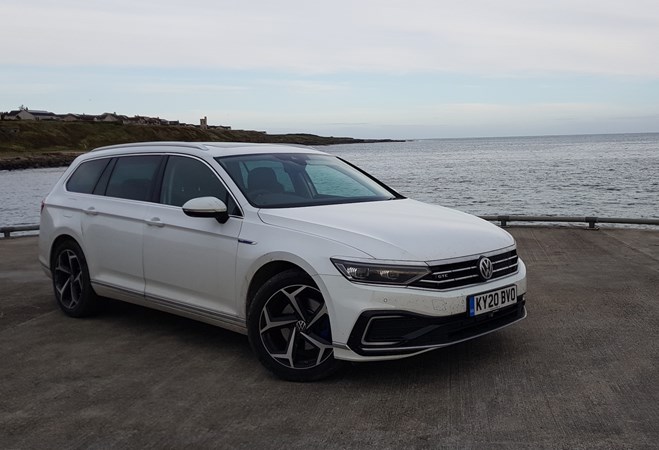
In theory, it’s time to wave goodbye to the Volkswagen Passat GTE. Has it been a good car for transporting the family, covering big distances, and running on electricity?
I say in theory, because although we’ve been driving the Passat GTE for six months and 7,500 miles, there’s still so much to say about it. So, I’ll consider this an opportunity to take stock rather than call a verdict on our six months together. Right now, though, I find myself respecting the Volkswagen Passat far more than loving it – but as a vehicle for swallowing loads and covering distances, you’d have to go a long way to beat this car.
At this point, it’s worth saying that my overall opinion of this car should be tempered by the lower mileage than I’d normally be covering. During a pandemic and the consequent restrictions, I’ve been unable to complete many of the very long trips I’d normally undertake – I reckon I’ve done around 60% of my normal distance, but it equates to around 15,000 miles per year, which is probably long enough for most private buyers and business users.
Passat at 7,500 miles: what’s good?
I’ve said it before and hate labouring the point, it drives really, really well. Considering it’s riding on impractical – but great-looking – 19-inch alloy wheels, the ride quality is comfortable and suits the wafty performance that’s on offer. But don’t get me wrong, a compliant ride doesn’t mean boat-like handling. Far from it – the handling is surprisingly incisive on twisty roads. Fun? No, but very, very competent, with high levels of grip and poise.
However, the Passat’s real talents lie in its abiity to swallow the family and all of the loads that come with them. The loadbay, which is longer than 6ft, seats folded, is well-shaped and blessed with a low sill and wide opening. The only downside is that the rear seats don’t fold flat, a common criticism these days. But it proves yet again that if you have a family or pets, the traditionally-shaped estate car really does have lots to offer over and above oh-so trendy SUVs.
Why? Because an SUV’s boot is inevitably smaller and has a higher loading sill.
Although it’s hard to recommend at Passat GTE for long-distance drivers who don’t have the time to constantly recharge the battery on the go, the plug-in hybrid version is a wonderfully refined car in which to spend time, and could be worth buying for its peacefulness alone. In normal hybrid mode, the petrol engine is hushed and unobtrusive – to the point that it’s difficult to tell when it’s switching from battery-only running to the petrol engine.
The GTE drive mode introduces a fake engine noise that’s annoying and unnecessary, though. But you can at least switch that off with a switch on the centre console.
Passat at 7,500 miles: what’s bad?
Onto the negatives then – and there really aren’t too many to worry about. The biggest is the infotainment system, which I won’t bore you with again, only to say that it’s slow, laggy and buggy. It’s a massive disappointment especially considering how good Volkswagen Group products generally are in this case – let’s hope it’s a one-off, and that at the very least, dealer updates might make it a whole lot more stable when running Apple CarPlay or Android Auto.
The only other issue of note is the keyless door locking system, which can sometimes drive me to distraction. The Passat is one of those cars that required two presses of the fob to open up manually. But annoyingly if your hands are full and you have passengers, if you open the driver’s door or the boot without using the key – by proximity – any passengers you have with you will be presented with a locked door until you open it yourself with the fob. Sounds trifling, but it proves infuriating over time.
Other than that, it’s positive news all the way. Yes, it lacks soul and is a bit dull, but goodness, it’s crushingly effective.
Passat at 7,500 miles: fuel economy
On the fuel consumption front, you don’t really get the best out of the GTE unless you keep the battery fully charged. Despite my best intentions early on, fuel economy has decreased in recent weeks due to the increase in the long distance journeys I’ve been doing.
So, if the overall consumption figure of 40.9mpg looks disappointing, bear in mind it’s been almost exclusively been motorway driving over the past six weeks. To that point, it was nearer 50mpg, with some weeks getting to nearer 100mpg thanks to a combination of short local trips, and almost exclusively living on my home charger.
If you want all-out economy, diesel is still really the only way to go. If you don’t, and you’re sticking to short journeys, then the Passay GTE is highly recommended.
What we’ve learned so far?
The Passat GTE has quietly earned a great deal of respect as a capable and fuss-free member of the family. It’s roomy, refined, rarely puts a foot wrong, and is brilliant at gobbling up miles. But you could say that about any Passat Estate.
The big question is whether the plug-in hybrid system is worth the effort. And without wishing to fudge the verdict, it really does come down to how you use it. If you’re a company car driver who racks up several hundred miles a day, then it’ll be hard to make this one work for you, as it’s really only a functioning hybrid for 50-100 miles, tops. After that, and without recharging, it’s going to get you between 35 and 40mpg compared with the 55-65mpg you’d expect from a diesel.
However, if you do less than, say, 50 miles between recharges, then the Passat GTE really is very rewarding – with the added bonus of being highly tax efficient (shame it’s above the £40,000 tax break, though).
Update 7: Verdict
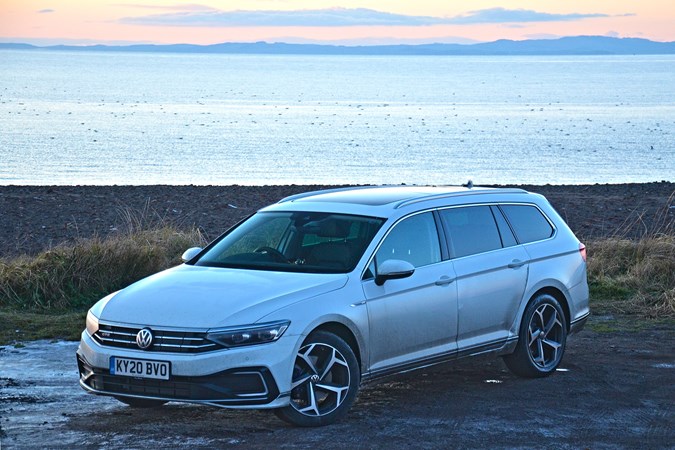
Keith signs off from the Volkswagen Passat GTE with a second opinion from Percy Lawman, who has spent a considerable amount of time with it.
Now our time with the Volkswagen Passat GTE has come to an end, it’s worth summing up our findings. Much of it has been said above, but I’ll say it again anyway – a PHEV doesn’t make sense to drive unless you can keep that battery topped up – not only does it drive better, it uses far less petrol. If you’re going to do long distances and aren’t able to top it up along the way, buy a diesel and enjoy a long-legged 60mpg average.
Percy Lawman ran the car for a few weeks after swapping his Skoda Octavia for it in the weeks before it went back. Although he was largely impressed, there were a couple of not insignificant reservations. As a family car, it works very well: ‘Visibility is very impressive. Lots of ‘glass’ reduces blind spots to a minimum. Heaps of space. I’d struggle to fill the boot it’s that large,’ he said.
Like me, he found the fuel consumption on petrol when the battery was discharged to be disappointing. In a mixture of mostly local driving, he had this to day: ‘The mpg on petrol only is not so good. Indicated mid 30s and that’s not hammering it. Could be an expensive cookie to run.’
Bur Percy loves the way it works as a PHEV, and he certainly backs up my feelings that it’s massively refined and really very smooth. ‘The hybrid system works very well – and gets a solid 10/10 here. The car switches between modes as and when and the driver doesn’t notice. I actually like it a lot, but if I was a private buyer then I’d need to check what extra mpg the electric “bit” adds to the mix.’
And in conclusion, it still comes highly recommended, especially if the plug-in part works for your lifestyle. It really is a supremely competent family car – both roomy and good to drive. Yes it’s a bit dull, but if you want charisma, may we suggest the plug-in hybrid Volkswagen Arteon Shooting Brake eTSI – it has all the qualities of the Passat, but in a tighter-driving, better-looking, slightly less roomy package. It costs more, is slightly less practical, but we reckon it’s worth it.
- Mileage: 8,037
- Average fuel consumption: 41.1mpg
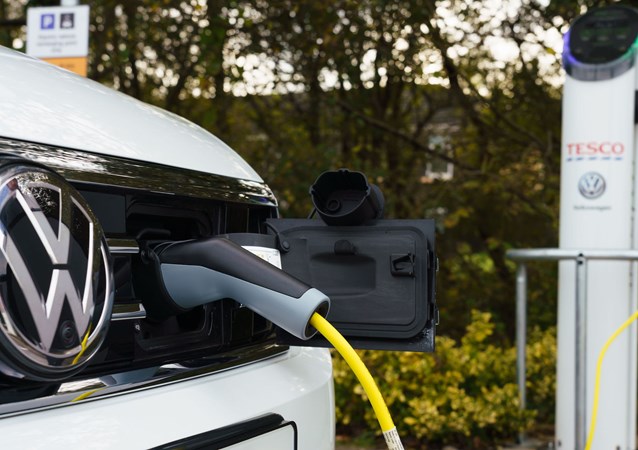


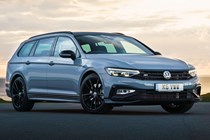
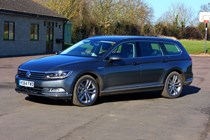
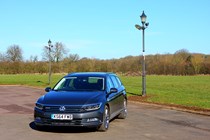
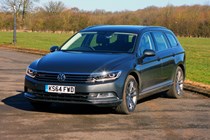
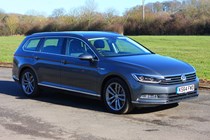
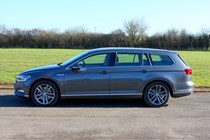
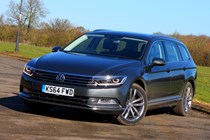
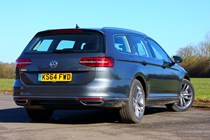
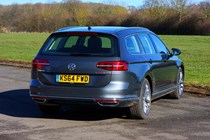
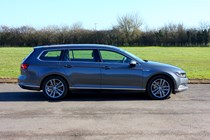
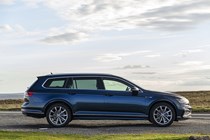
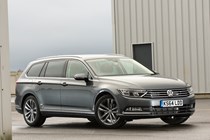
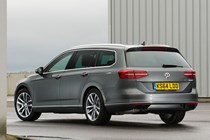
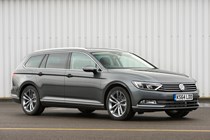
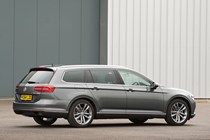
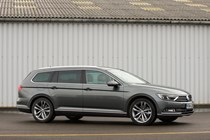
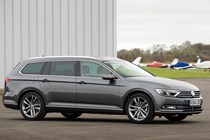
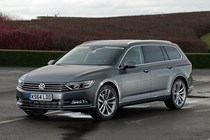
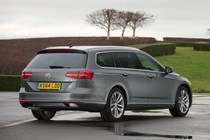
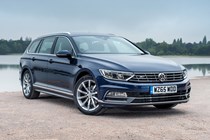
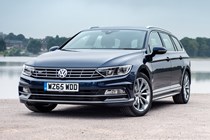
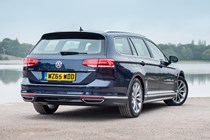
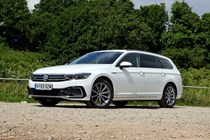
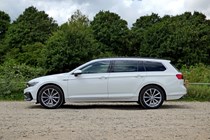
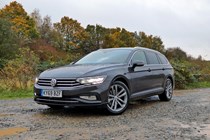
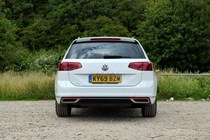
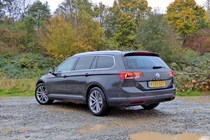
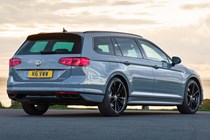
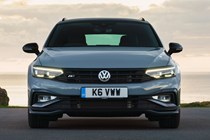

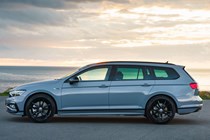
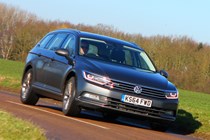

.jpg)
.jpg)
.jpg)
.jpg)
.jpg)
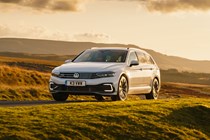
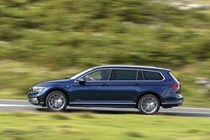
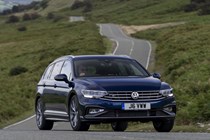
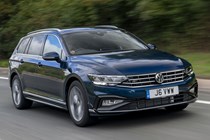
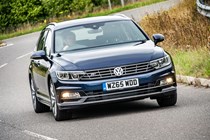
.jpg)
.jpg)
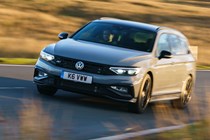
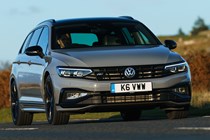
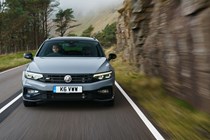
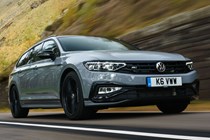
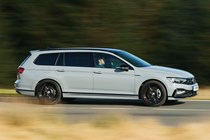
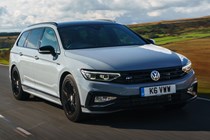
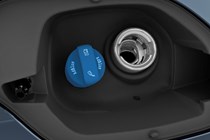
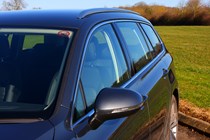
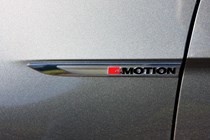
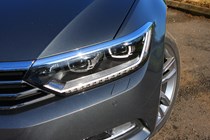
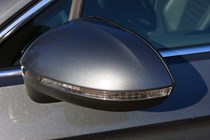
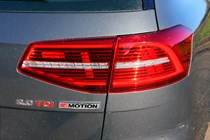
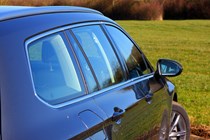
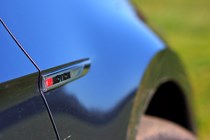
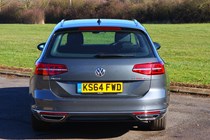
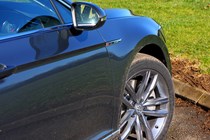
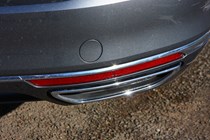
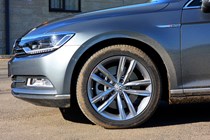
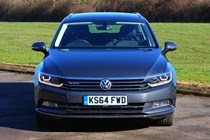
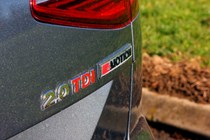
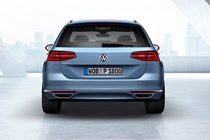
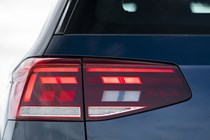
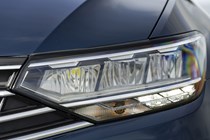
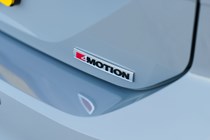
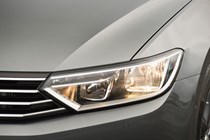
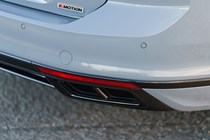
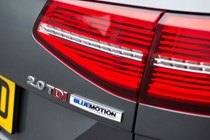
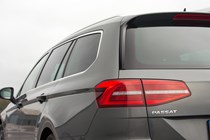
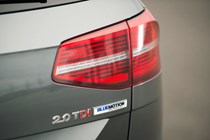
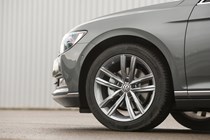
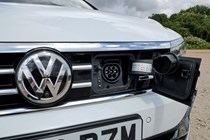
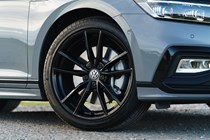
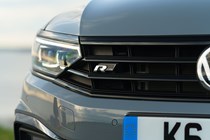
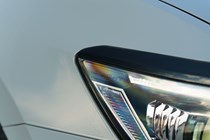
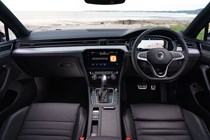
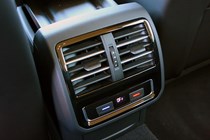
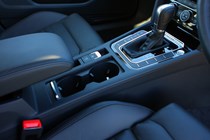
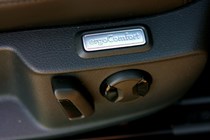
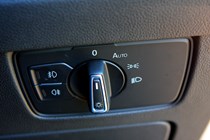
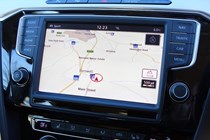
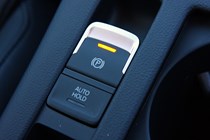
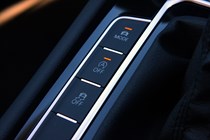



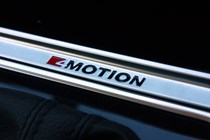
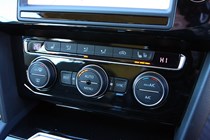
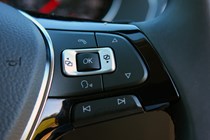
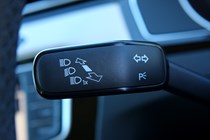
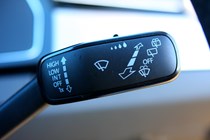
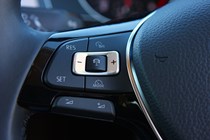
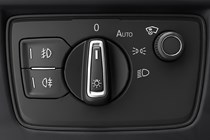
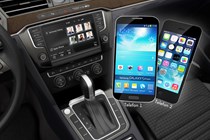
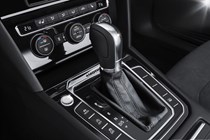
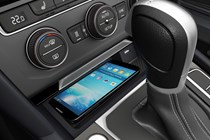
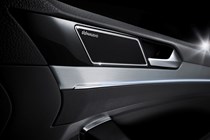
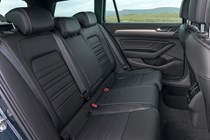

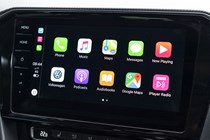
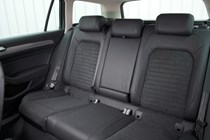

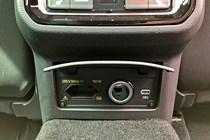
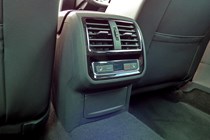
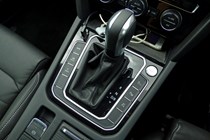
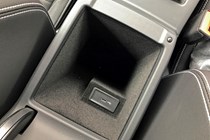
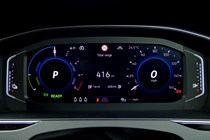
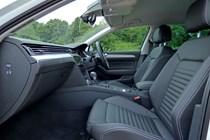
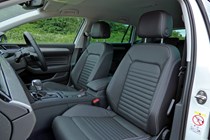
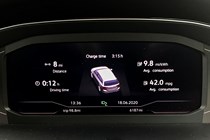
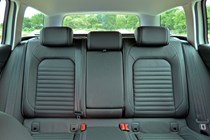

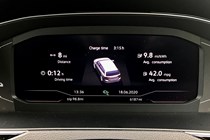
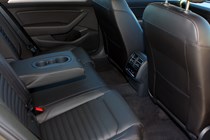
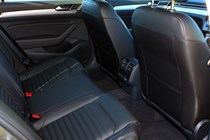
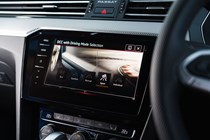
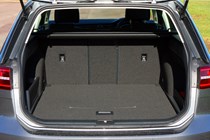
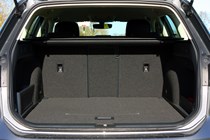
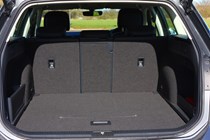
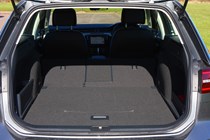

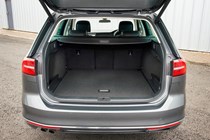
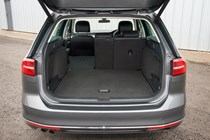
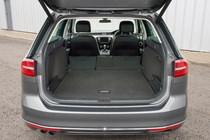
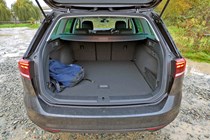
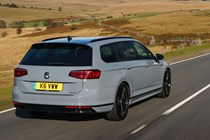

































.jpg?quality=50)
.jpg?quality=50)
.jpg?quality=50)
.jpg?quality=50)
.jpg?quality=50)





.jpg?quality=50)
.jpg?quality=50)




















































































